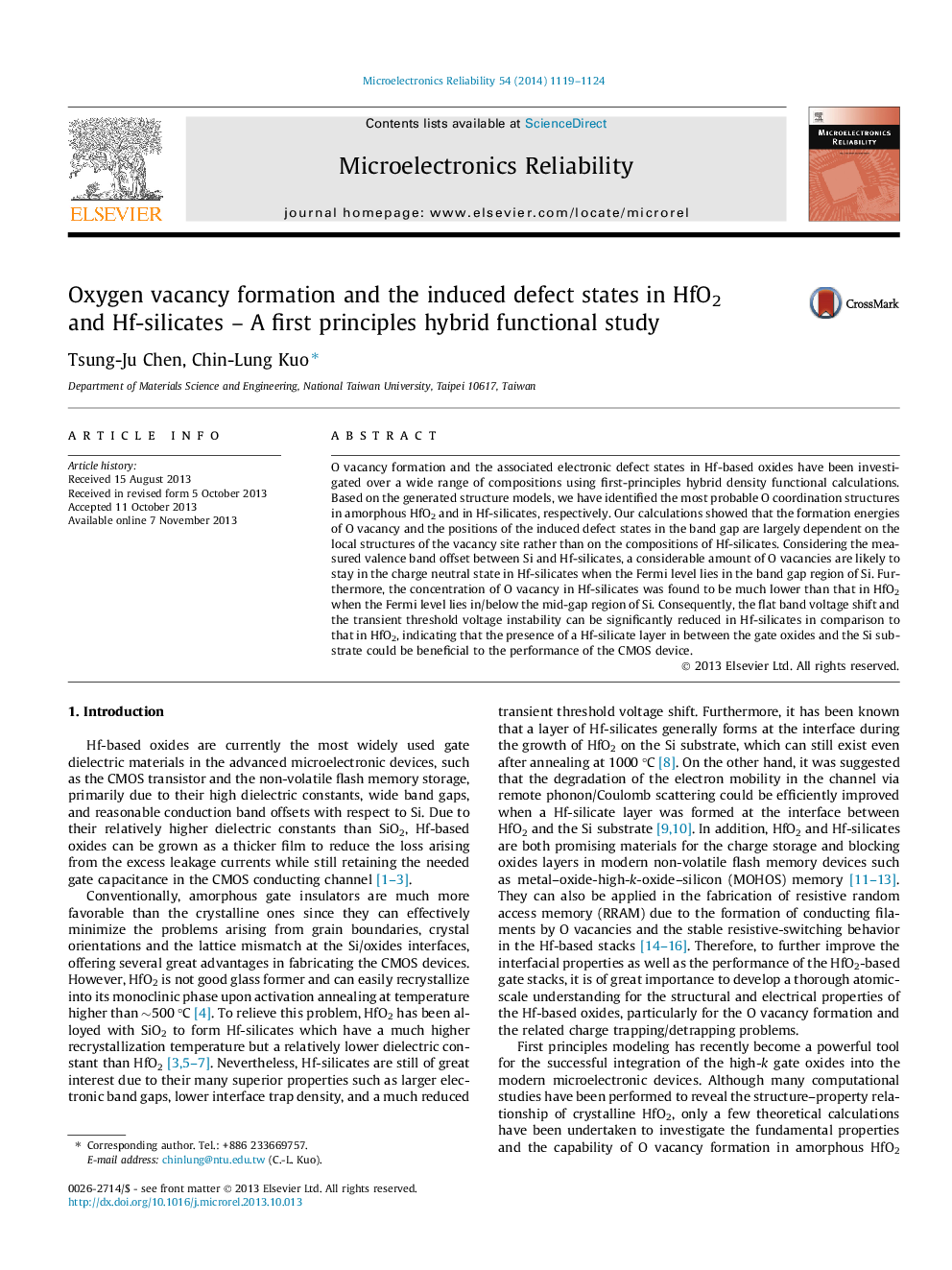| کد مقاله | کد نشریه | سال انتشار | مقاله انگلیسی | نسخه تمام متن |
|---|---|---|---|---|
| 546860 | 1450548 | 2014 | 6 صفحه PDF | دانلود رایگان |

• The structures of O vacancies in Hf-based oxides were characterized.
• The ionization levels and formation energies of O vacancies were calculated.
• The role of Si in improving the performance of the Hf-based devices was clarified.
• The use of Hf-based oxides in non-volatile flash memory devices was evaluated.
O vacancy formation and the associated electronic defect states in Hf-based oxides have been investigated over a wide range of compositions using first-principles hybrid density functional calculations. Based on the generated structure models, we have identified the most probable O coordination structures in amorphous HfO2 and in Hf-silicates, respectively. Our calculations showed that the formation energies of O vacancy and the positions of the induced defect states in the band gap are largely dependent on the local structures of the vacancy site rather than on the compositions of Hf-silicates. Considering the measured valence band offset between Si and Hf-silicates, a considerable amount of O vacancies are likely to stay in the charge neutral state in Hf-silicates when the Fermi level lies in the band gap region of Si. Furthermore, the concentration of O vacancy in Hf-silicates was found to be much lower than that in HfO2 when the Fermi level lies in/below the mid-gap region of Si. Consequently, the flat band voltage shift and the transient threshold voltage instability can be significantly reduced in Hf-silicates in comparison to that in HfO2, indicating that the presence of a Hf-silicate layer in between the gate oxides and the Si substrate could be beneficial to the performance of the CMOS device.
Journal: Microelectronics Reliability - Volume 54, Issues 6–7, June–July 2014, Pages 1119–1124